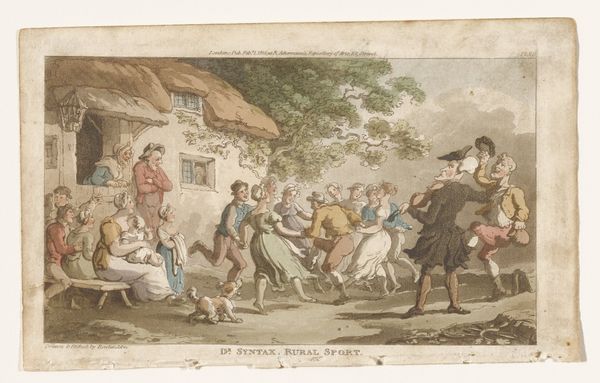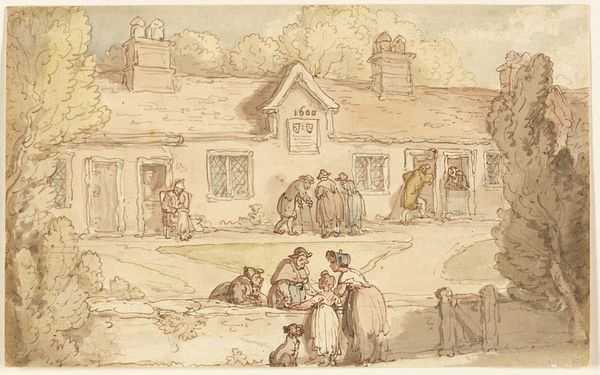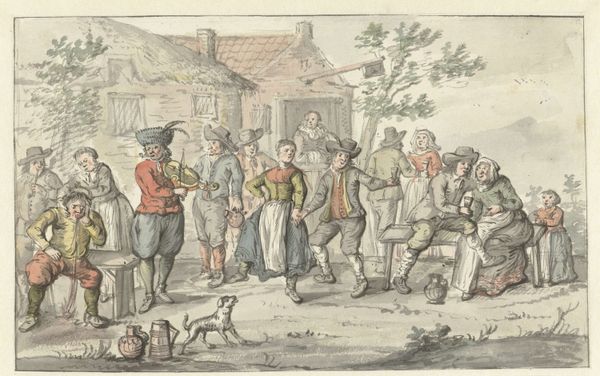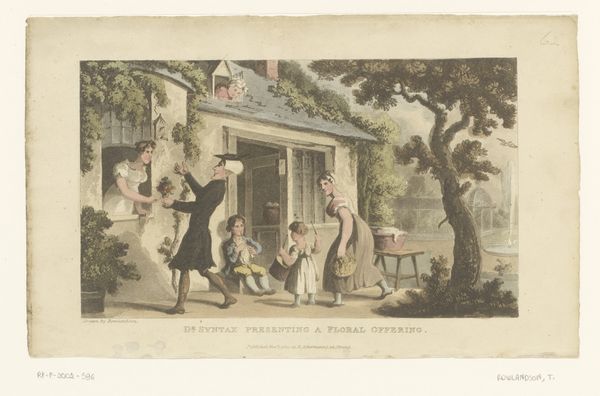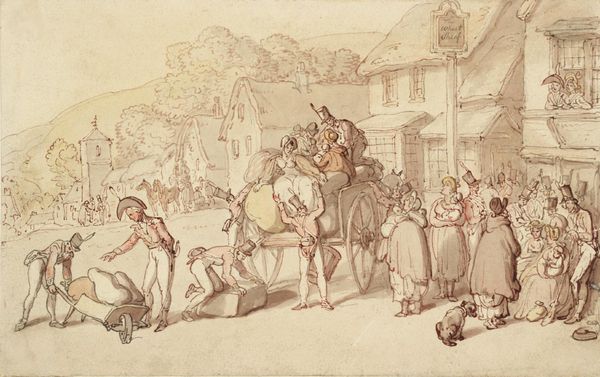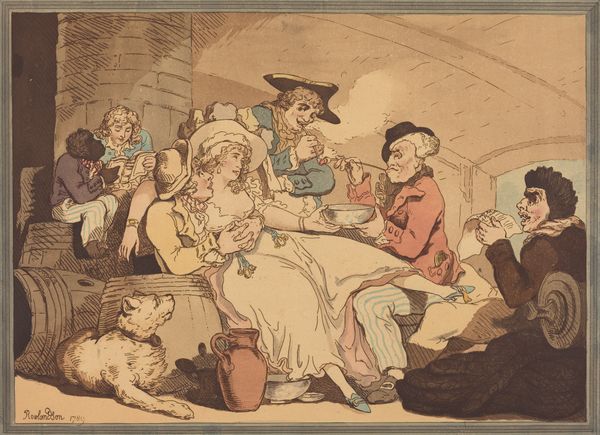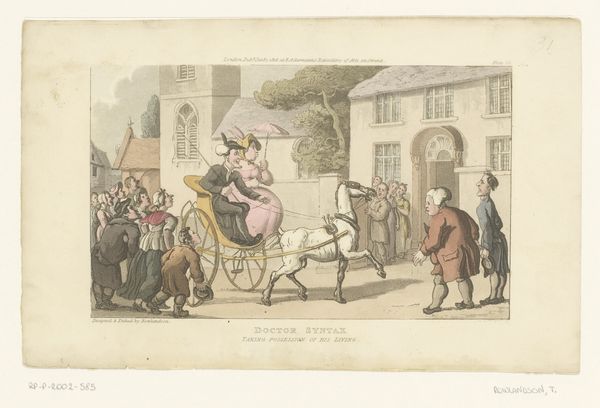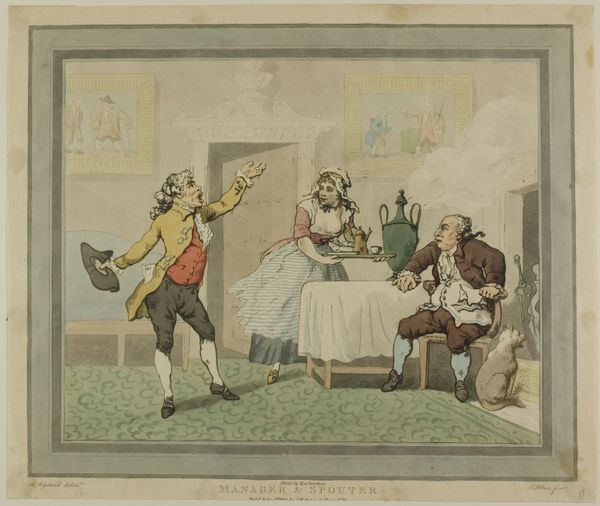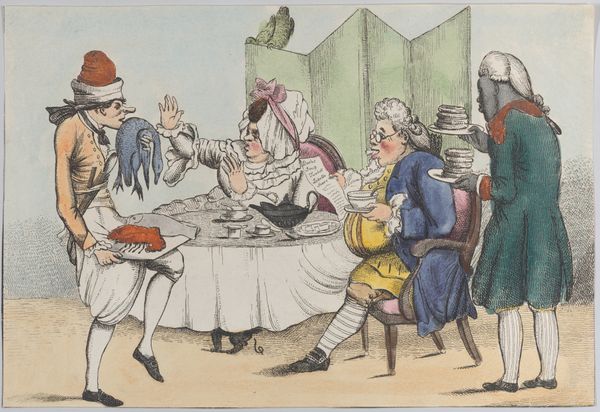
drawing, print, plein-air, ink
#
drawing
#
narrative-art
# print
#
caricature
#
plein-air
#
ink
#
sketchwork
#
romanticism
#
genre-painting
Dimensions: 64 × 103 mm
Copyright: Public Domain
Curator: Let’s turn our attention to "Study for Dr. Syntax and Rural Sports," an ink and watercolor drawing created around 1812 by Thomas Rowlandson, housed here at the Art Institute. The scene depicts a group of people dancing and socializing in a rural setting. Editor: My first impression is the overwhelming sense of animation—a swirling vortex of figures rendered with such energetic lines and washes. The palette is remarkably muted, lending it an almost dreamlike quality, but the choreography appears disjointed, almost agitated. Curator: The drawing serves as a preparatory sketch for one of Rowlandson's series of prints featuring the character Dr. Syntax. Through this caricature, Rowlandson satirized the rural gentry and their pretensions, reflecting broader social critiques of class and power in early 19th-century England. The artwork highlights a society grappling with its changing identities, particularly concerning class distinctions, performative leisure, and the myth of rural bliss versus urban squalor. Editor: Note the architectural structure in the background, composed of angular shapes against the round bodies, that establishes visual tension and the relationship of humanity to habitat. Semiotically, we must view this juxtaposition, also evident in the light, thin lines around the human figures—to highlight and frame them and to denote the scene's psychological layers. The landscape and bodies both occupy one reality as parts of the artistic intention of romantic expression. Curator: And don't overlook that the setting—likely a village green or common space—becomes a stage upon which these social dynamics are played out. Who is afforded the opportunity to participate, who observes from the sidelines, and how do gender roles shape participation in leisure activities like dancing? These visual elements represent Rowlandson's views of cultural behavior within social class constructs. Editor: I concur, it is within those figures that there seems to be an intentional disruption to spatial harmony—see, in fact, how the dancer's limbs pull in every possible direction. With these visual contradictions, a central focal point doesn't seem possible because every potential place for one is denied in favor of imbalance. Curator: Viewing this artwork, I see the complexities of history and cultural expression converging. This provides a window into the world of those times, allowing us to explore not just art, but history, philosophy and anthropology too. Editor: Indeed, analyzing it through a formal lens gives us clues for better understanding that era's semiotic language. With that, new dialogues open—allowing fresh perceptions about artistic styles over time.
Comments
No comments
Be the first to comment and join the conversation on the ultimate creative platform.
